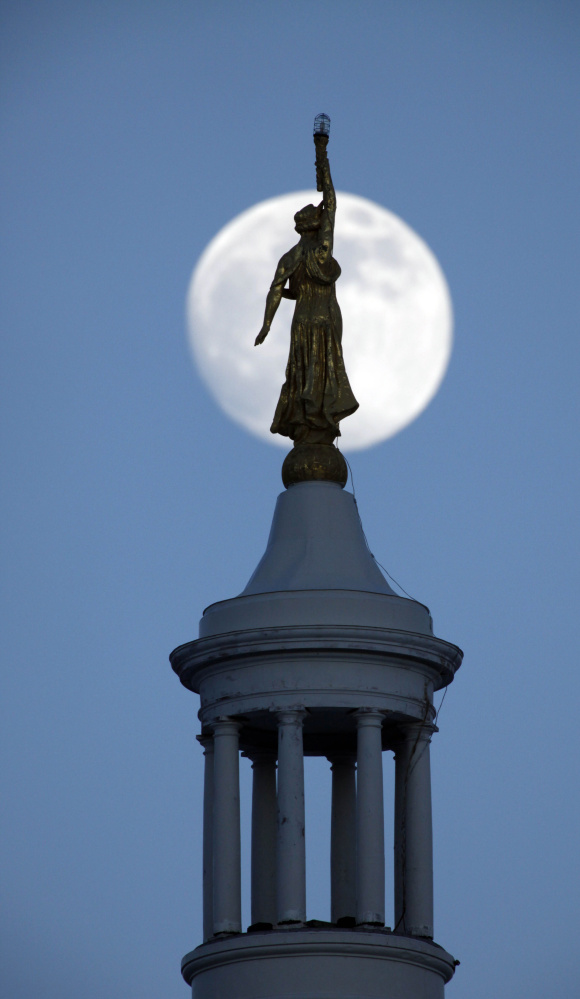For 4½ billion years, the moon has circled around Earth. The subtle tug of its gravity helps keep our planet steady on its axis and generates the rise and fall of the ocean tides.
But occasionally, that pull gets to be a bit too much.
According to a study published in Nature Geoscience this week, the same gravitational influence that the moon has on the oceans may also trigger earthquakes along Earth’s most fragile faults. Researchers at the University of Tokyo calculated the levels of “tidal stress” before major earthquakes of the past few decades and found that high levels of stress were often followed by major earthquakes.
“This suggests that the probability of a tiny rock failure expanding to a gigantic rupture increases with increasing tidal stress levels,” the scientists wrote. “We conclude that large earthquakes are more probable during periods of high tidal stress.”
The magnitude 9.1 quake in Sumatra, Indonesia, in December 2004, which caused a tsunami that killed 230,000 people, was likely precipitated by the influence of the moon, the scientists say. So was the 2011 temblor in Japan, which left at least 15,000 dead and caused a meltdown at the Fukushima nuclear reactor.
Earth’s tides are caused by the gravitational pull of the moon as it moves over the surface of the planet. When the satellite is directly above a certain spot, it pulls the water there toward itself, causing the ocean on that side of the planet (and the opposite side) to bulge.
This effect is especially evident when the Earth, sun and the moon are aligned, because the sun is able to contribute its bulk to reinforce the moon’s gravity. That’s why full moons and new moons are associated with the most dramatic high tides.
Much as the moon tugs at the ocean, it also exerts subtle pressures on the Earth’s crust. We don’t notice it, but the ground beneath us is stressed by the tidal influence of Earth’s satellite. Occasionally, it buckles. When that slight buckling happens around an already vulnerable fault line, it may set off cascading reactions that result in a major earthquake.
“The results are plausible,” University of Washington seismologist John Vidale told Nature. Vidale was not involved in the research; in fact, he previously helped debunk studies claiming a more tenuous connection between earthquakes and tides.
But the connection still needs to be verified. Scientists point out that many large earthquakes of the past decade have happened a times when tidal stress wasn’t a factor. Whether the phase of the moon can truly help predict large earthquakes remains to be seen.
Send questions/comments to the editors.



Success. Please wait for the page to reload. If the page does not reload within 5 seconds, please refresh the page.
Enter your email and password to access comments.
Hi, to comment on stories you must . This profile is in addition to your subscription and website login.
Already have a commenting profile? .
Invalid username/password.
Please check your email to confirm and complete your registration.
Only subscribers are eligible to post comments. Please subscribe or login first for digital access. Here’s why.
Use the form below to reset your password. When you've submitted your account email, we will send an email with a reset code.